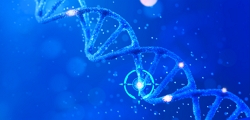-
REAGENT SERVICES
Hot!
-
Most Popular Services
-
Molecular Biology
-
Recombinant Antibody/Protein
-
Reagent Antibody
-
CRISPR Gene Editing
-
DNA Mutant Library
-
IVT RNA and LNP Formulations
-
Oligo Synthesis
-
Peptides
-
Cell Engineering
-
- CRISPR/Cas9 sgRNA
- CRISPR/Cas12a crRNA
- Prime Editing Guide RNA
- Base Editing Guide RNA
- HDR Templates
- gRNA + HDR Template Design Tools
- cGMP Guide RNA
- cGMP HDR Templates
- CRISPR/Cas Proteins
- CAR-T Knock-in Optimization Kit
- CRISPR Plasmids
- CRISPR gRNA Plasmid Libraries
- CRISPR Cell Lines
- Microbial Genome Editing
-
-
PRODUCTS
-
Most Popular Reagents
-
 Instruments
Instruments
-
Antibodies
-
ELISA Kits
-
Protein Electrophoresis and Blotting
-
Protein and Antibody Purification
-
Recombinant Proteins
-
Molecular Biology
-
Stable Cell Lines
-
Cell Isolation and Activation
-
 IVD Raw Materials
IVD Raw Materials
-
 Therapy Applications
Therapy Applications
-
Resources
-
- Pharmacokinetics and Immunogenecity ELISA Kits
- Viral Titration QC ELISA Kits
- -- Lentivirus Titer p24 ELISA KitHot!
- -- MuLV Titer p30 ELISA KitNew!
- -- AAV2 and AAVX Titer Capsid ELISA Kits
- Impurity Test ELISA Kits
- -- BSA ELISA Kit, 2G
- -- Cas9 ELISA KitNew!
- -- Protein A ELISA KitNew!
- -- His tagged protein detection & purification
- -- dsRNA ELISA Kit
- -- Endonuclease ELISA Kit
- COVID-19 Detection cPass™ Technology Kits
-
- Automated Maxi-Plasmid PurificationHot!
- Automated Mini-Plasmid PurificationNew!
- PCR Reagents
- S.marcescens Nuclease Benz-Neburase™
- DNA Assembly GenBuilder™
- Cas9 / Cas12a / Cas13a Nucleases
- Base and Prime Editing Nucleases
- GMP Cas9 Nucleases
- CRISPR sgRNA Synthesis
- HDR Knock-in Template
- CRISPR Gene Editing Kits and Antibodies
-
![AmMag™ Quatro Automated Plasmid Purification]() AmMag™ Quatro automated plasmid purification
AmMag™ Quatro automated plasmid purification
-
![Anti-Camelid VHH]() MonoRab™ Anti-VHH Antibodies
MonoRab™ Anti-VHH Antibodies
-
![ELISA Kits]() ELISA Kits
ELISA Kits
-
![Precast Gels]() SurePAGE™ Precast Gels
SurePAGE™ Precast Gels
-
![Quatro ProAb Automated Protein and Antibody Purification System]() AmMag™ Quatro ProAb Automated Protein and Antibody Purification System
AmMag™ Quatro ProAb Automated Protein and Antibody Purification System
-
![Target Proteins]() Target Proteins
Target Proteins
-
![AmMag™ Quatro Automated Plasmid Purification]() AmMag™ Quatro automated plasmid purification
AmMag™ Quatro automated plasmid purification
-
![Stable Cell Lines]() Stable Cell Lines
Stable Cell Lines
-
![Cell Isolation and Activation]() Cell Isolation and Activation
Cell Isolation and Activation
-
 IVD Raw Materials
IVD Raw Materials
-
![Quick
Order]() Quick Order
Quick Order
-
![Quick
Order]() Quick Order
Quick Order
- APPLICATIONS
- RESOURCES
- ABOUT US
- SIGN IN My Account SIGN OUT
- REGISTER

![Amino Acid Code Amino Acid Code]()
gene Related Biological Terms
This Biology terms dictionary provides query services for biology and biochemistry terms. Please enter the biology or biochemistry terms you want to search.
List by Alphabet: A B C D E F G H I J K L M N O P Q R S T U V W X Y Z
gene Related Biological Terms:
The biosynthesis of glucose from smaller, non-carbohydrate, metabolites, i.e. amino acids, tricarboxylic acid cycle intermediates, lactate or glycerol.
Descriptive of a diversity according to some criterion for detecting it; e.g. a mixture of proteins or polynucleotides of differing electrophoretic mobility, size or sequence. Heterogeneity is contrasted with homogeneity, a uniformity according to some criterion. (see also heterogenous)
hnRNA; the unprocessed DNA transcripts, which includes pre-mRNAs.
see heterogeneous
A strategy for identification of receptor-binding regions of a protein by substitution of analogous regions from homologous proteins in order to preserve the native three-dimensional structure of the original protein; e.g. the substitution of regions of human growth hormone with regions from pig growth hormone, human prolactin or human placental lactogen, followed by determination of binding constants for the constructs. Learn more about amino acid chart.
(= transposon)
A method to construct a site-specific mutated gene and to select it away from the wild-type. A strain of E. coli with only weak dUTPase activity has high levels of dUTP and consequently incorporates dUTP into a plasmid DNA in competition with dTTP. This plasmid is used in an in vitro system as a template for DNA synthesis with a primer into which the desired mutation has been incorporated. The duplex, containing the wild-type sequence with Us replacing Ts (U-DNA) complementary to a strand with the usual DNA bases and incorporating the mutation, is introduced into a wild-type bacterium that can remove the inappropriate bases from, and thus inactivate, the U-DNA strand and leave the mutated strand to be replicated. Recommended reading: next generation sequencing
(see monodisperse)
A transposon or an insertion sequence; a polynucleotide sequence that can move from a chromosome or plasmid to another chromosome or plasmid. (see also intron homing; protein splicing)
The term multigene family is broadly used to include groups of genes from the same organism that encode proteins with similar sequences either over their full lengths or limited to a specific domain. DNA duplications can generate gene pairs. If both copies are maintained in subsequent generations, then a multigene family will exist. A multigene family is a member of a family of related proteins encoded by a set of similar genes. Multigene families are believed to have arisen by duplication and variation of a single ancestral gene. Examples of multigene families include those that encode the actins, hemoglobins, immunoglobulins, tubulins, interferons, histones, etc. The significance of recognizing multigene families is that the members may have related functions. Genes that are identical or nearly identical in sequence and regulation can be considered to encode isoforms rather than members of a multigene family.
-
Top Search
-
Hot Glossary
-
Antibody
If you know of any terms that have been omitted from this glossary that you feel would be useful to include, please send detail to the Editorial Office at GenScript: website@genscript.com
If your term is adopted, we will send 1,000 EzCoupon points to your GenScript account.
-





































